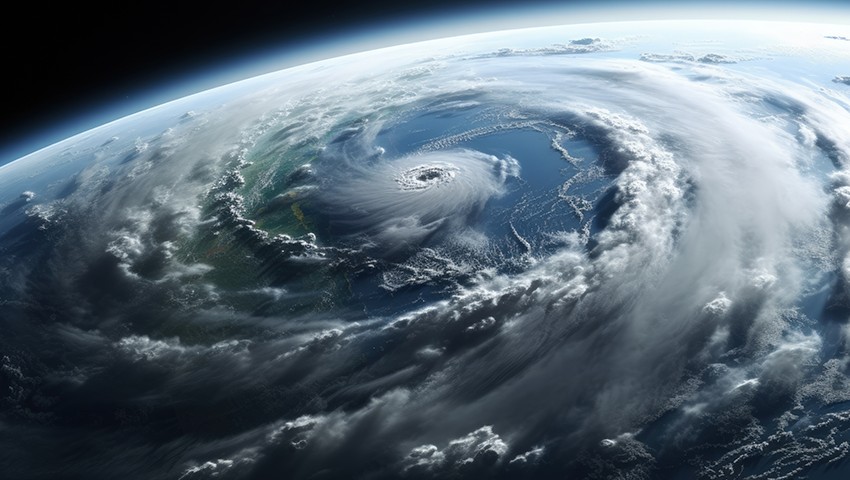
Meteorological marvels: AI redefines weather forecasting
With the advent of Artificial Intelligence (AI) in weather forecasting, what once seemed an insurmountable challenge – predicting the path and intensity of hurricanes – is now undergoing a huge transformation. Advanced AI-driven models are heralding a paradigm shift in forecasting, offering unprecedented accuracy and potential insights into one of nature’s most formidable phenomena: Atlantic hurricanes.
The journey towards AI-driven weather forecasting began with a pivotal moment – a chance encounter between two young innovators at Stanford University. John Dean, an electrical engineer, and Kai Marshland, a computer scientist, embarked on a mission to tackle the age-old problem of weather uncertainty. Their brainchild, WindBorne Systems, introduced a novel solution: miniature weather balloons, capable of traversing the Earth’s atmosphere for up to 40 days. By harnessing these balloons to collect atmospheric data, Dean and Marshland aimed to revolutionize global weather forecasts, transcending the limitations of traditional observation methods.
Before this, the European Centre for Medium-Range Weather Forecasts (ECMWF) maintained a treasure trove of data known as ERA5. This dataset contains atmospheric, land, and oceanic weather data for every day, at points around the world, going back to 1940. The last 50 years of data, especially after the advent of global satellite coverage, is particularly rich. While ERA5 wasn’t initially created for AI applications, it has turned out to be incredibly useful for training weather forecasting models.
Computer scientists began seriously using ERA5 data to train AI models for weather forecasting in 2022. Since then, the technology has made rapid strides. In some cases, the output of these AI models surpasses global weather models that scientists have spent decades designing and building. And here’s the kicker: these AI models can run on a single desktop computer, unlike their supercomputer counterparts.
The transition from theoretical innovation to real-world application has been swift. WindBorne’s WeatherMesh model, powered by AI algorithms, has demonstrated remarkable prowess in hurricane forecasting, outperforming traditional physics-based models in track prediction accuracy. Similarly, the ECMWF has embraced the AI revolution, unveiling the Artificial Intelligence/Integrated Forecasting System (AIFS). With its ability to produce "very promising" real-time forecasts, AIFS represents a significant leap forward in meteorological prediction capabilities.
At the heart of this meteorological marvel lies a fundamental shift in approach. Unlike traditional forecasting models, which rely on complex physical equations to simulate atmospheric dynamics, AI-based models like WeatherMesh and AIFS operate on a different principle – learning. By analyzing vast datasets, including ERA5, these models discern intricate patterns and correlations, enabling them to predict weather phenomena with unprecedented accuracy.
A snapshot of the Earth and its weather conditions is shown to the model: values like temperature, pressure, humidity, winds, and much more at various levels of the atmosphere. Then the model is shown what conditions were like six hours later around the Earth. The model then "learns" this relationship between weather now and conditions a few hours later. The process is repeated many times over. By ingesting all this data, the model gets better and better at recognizing patterns and making connections about conditions now, say, a low pressure zone over the Northern Atlantic Ocean, and what that means for weather downstream over Europe and Asia over the coming week to 10 days.
One of the most striking advantages of AI models is their efficiency. Traditional physics-based models require immense computational power, often relying on supercomputers. In contrast, AI models like WeatherMesh can run on a single high-powered desktop computer equipped with a GPU. This dramatic reduction in computational resources makes AI models more accessible and scalable.
While the meteorological community eagerly embraces the promise of AI-driven forecasting, challenges abound. Ensuring robustness, handling extreme events, and addressing biases are critical areas of research. The integration of AI models into operational forecasts poses logistical and methodological hurdles, requiring rigorous evaluation and validation. Moreover, the coexistence of AI-driven and physics-based models raises questions about their complementary roles in shaping future forecasting methodologies.
